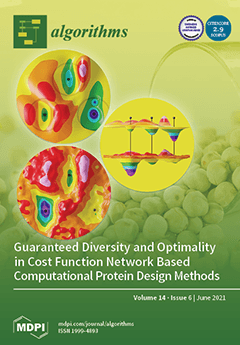Understanding how different two organisms are is one question addressed by the comparative genomics field. A well-accepted way to estimate the evolutionary distance between genomes of two organisms is finding the rearrangement distance, which is the smallest number of rearrangements needed to transform
[...] Read more.
Understanding how different two organisms are is one question addressed by the comparative genomics field. A well-accepted way to estimate the evolutionary distance between genomes of two organisms is finding the rearrangement distance, which is the smallest number of rearrangements needed to transform one genome into another. By representing genomes as permutations, one of them can be represented as the identity permutation, and, so, we reduce the problem of transforming one permutation into another to the problem of sorting a permutation using the minimum number of rearrangements. This work investigates the problems of sorting permutations using reversals and/or transpositions, with some additional restrictions of biological relevance. Given a value
, the problem now is how to sort a
-permutation, which is a permutation whose elements are less than
positions away from their correct places (regarding the identity), by applying the minimum number of rearrangements. Each
-rearrangement must have size, at most,
, and, when applied to a
-permutation, the result should also be a
-permutation. We present algorithms with approximation factors of
,
, and
for the problems of Sorting
-Permutations by
-Reversals, by
-Transpositions, and by both operations.
Full article





